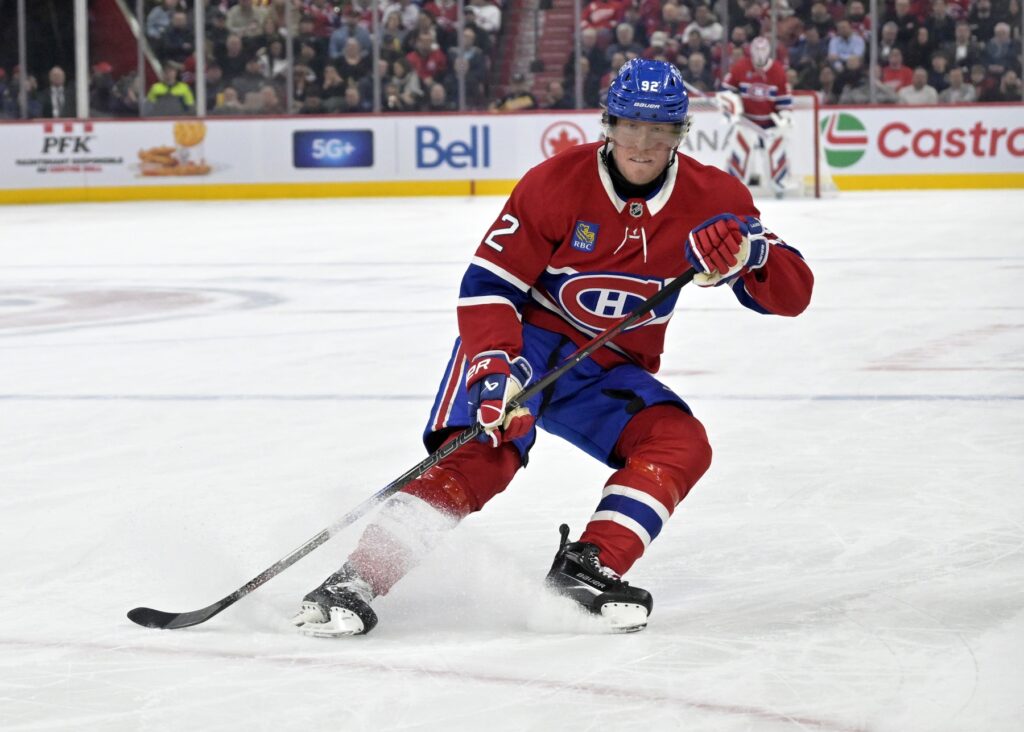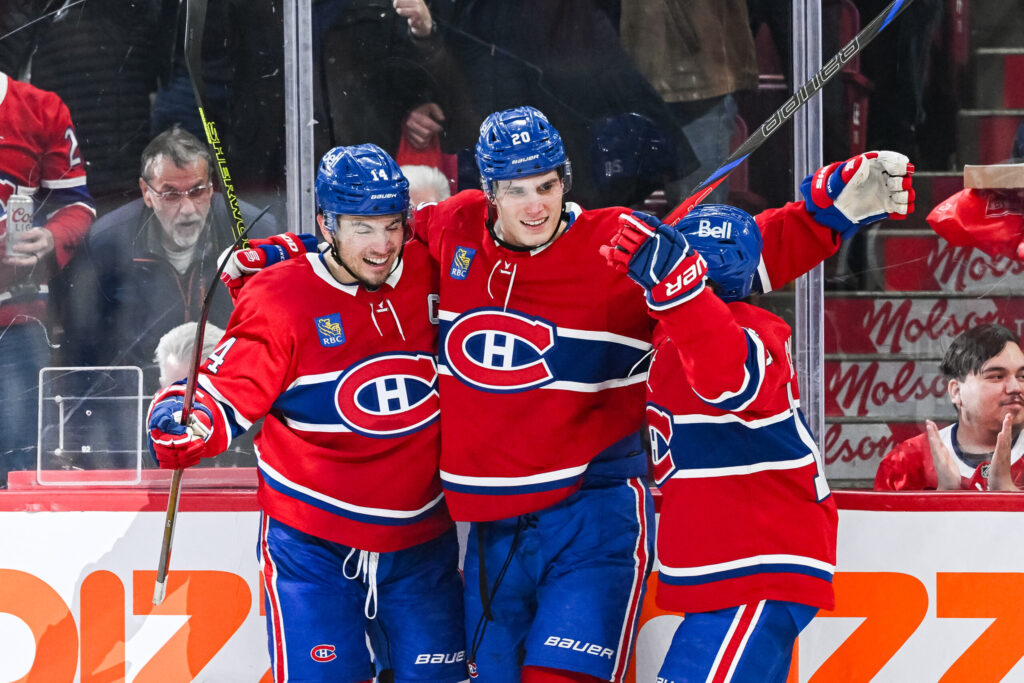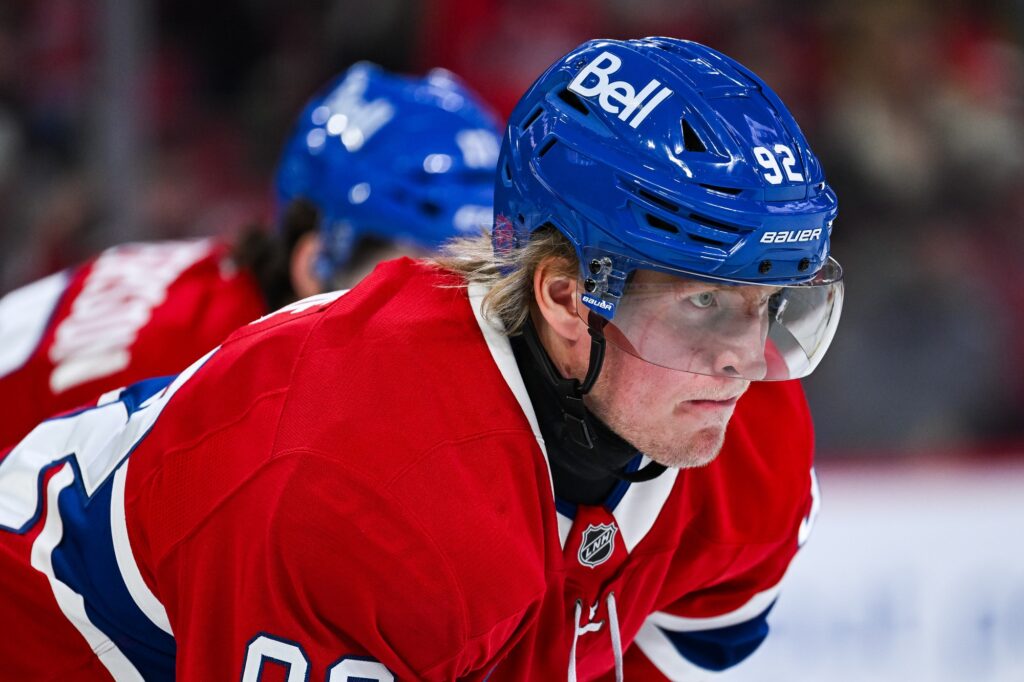When news broke that Patrik Laine would be sidelined for three to four months following core muscle surgery, the collective groan from the Bell Centre faithful was predictable. Losing a former 40-goal scorer with one of the most lethal shots in the NHL is, by any definition, a significant blow. Laine, who had been out since mid-October with what was initially dubbed a minor lower-body issue, underwent a procedure for a sports hernia and isn’t expected back until late January at the earliest.
This is a massive piece of offensive hardware removed from the lineup. Yet, as the Canadiens continue to find success and, more importantly, consistency, an uncomfortable question has emerged: Is the team better without him?
Also on the EDGE – When the Whistle Becomes the Story: Inside the Oilers & Canadiens Officiating Controversy
It’s the paradox at the heart of Montreal’s early-season performance. While the loss of Laine the individual talent is undeniable, his absence has allowed the team to flourish, creating a clarity of purpose that was previously muddled.
A System Built for Everyone Else?
Martin St. Louis has spent his tenure as head coach meticulously crafting a team identity. The “St. Louis system” is not complicated in theory, but it is demanding in practice. It’s built on a foundation of pace, relentless puck pressure, and a five-man commitment to structure. It demands that wingers are not just finishers, but retrievers. They must win board battles, support their defencemen, and transition from defence to offence in a blink.
This is where the philosophical disconnect with Laine becomes apparent.

Laine is a generational shooter, a pure sniper in the classic sense. His game is built around finding soft ice, positioning himself for the open look, and letting his world-class release do the work. He is an elite complementary weapon. The St. Louis system, however, doesn’t prioritize complementary pieces; it demands interchangeable engines.
The on-ice results prior to his injury hinted at this friction. Laine had tallied only one assist in five games. More telling was his deployment. He was being used sparingly at even strength, at times finding himself on the fourth line, and was relegated to the second power-play unit. The coaching staff, it seems, had already been struggling to integrate his unique, and dimensionally specific, skill set.
The On-Ice Evidence: Addition by Subtraction
In Laine’s absence, the Canadiens look, frankly, more like the team St. Louis has been trying to build. The game flows more naturally. The team appears faster, more connected, and the forecheck is more cohesive.
The defensive structure, in particular, has solidified. Forwards are backchecking with purpose, defensive zone exits are cleaner, and the team is limiting the kind of odd-man rushes that plagued them while trying to accommodate a high-risk, high-reward shooter. It now looks like a group where every piece fits the puzzle, rather than a group trying to build a puzzle around one awkwardly shaped, albeit brilliant, piece.
Perhaps the most startling development has been on the man advantage. Logic would dictate that removing a player who potted 15 power-play goals last season would be catastrophic. Instead, the opposite has happened. The first power-play unit, no longer burdened with the primary objective of “feed Laine for the one-timer,” has become more dynamic. It now relies on puck movement, mobility, and deception. Without the static threat, the attack has become more unpredictable and, consequently, more effective.
You Don’t Just ‘Replace’ a 40-Goal Shot
This is not to say Laine’s absence is without consequence. You cannot simply pull a player with his offensive gifts out of a lineup and expect no repercussions. His shot—a blend of power, precision, and a deceptive release—is a weapon that fundamentally alters an opponent’s defensive strategy and penalty kill structure.
The Canadiens are now leaning heavily on their core of Cole Caufield, Nick Suzuki, and Juraj Slafkovsky to carry the offensive load. While this presents a major opportunity for young players like Ivan Demidov and Alex Newhook to seize larger roles, it also puts immense pressure on Caufield and Suzuki. Opposing defences can now key in on Montreal’s primary threats without the fear of Laine lurking on the weak side.

This marks the second consecutive season Laine has missed significant time, following a 24-game absence last year with a knee injury. The immediate goal for a Canadiens team surprisingly near the top of the Atlantic Division standings is to “simply hang on” and weather this storm. The test of the team’s depth has officially begun.
An $8.7 Million Question Mark
The timing of this injury could not be more critical, as it forces the organization to confront a difficult financial and philosophical future.
Laine is in the final season of his four-year, $34.8 million contract, which carries a hefty $8.7 million average annual value. He is scheduled to become an unrestricted free agent on July 1st.
Even before the surgery, an extension was viewed as a “potential maybe.” Laine’s one-dimensional play, combined with his high cap hit and now a troubling injury history, has made him an “expensive weapon.” The return on investment has been low. This latest setback, which will consume nearly half the season, has almost certainly turned that “maybe” into a “doubtful.”
Also on the EDGE – Canadiens Front Office Rewarded for Swift Rebuild – Gorton & Hughes Get Extensions
The End of the Experiment?
Laine’s injury is, first and foremost, a personal setback for a gifted player. But for the Canadiens’ front office, it provides an unexpected, extended audition for life without him.
If the team can continue to thrive—playing fast, structured, responsible hockey and maintaining its place in the standings—the path forward becomes clear. The injury didn’t create the questions about Laine’s long-term fit in Montreal, but it may have provided the definitive answer.
The Canadiens now have three to four months to evaluate their roster without the Laine variable. If the system proves stronger than the individual, it seems all but certain the team will let him explore free agency. That $8.7 million in cap space could then be reinvested to build the team St. Louis has envisioned all along: one defined by relentless, interchangeable parts, rather than by a singular, specialized weapon.
Created with the aid of Gemini AI
